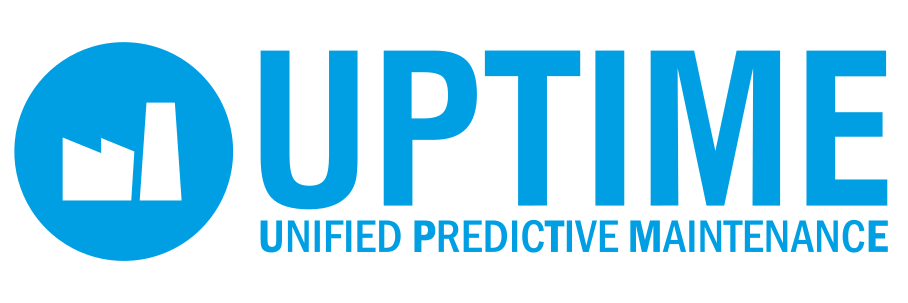0
19.09.2019
Dear reader,
Welcome to the 4th edition of the UPTIME Newsletter. In the previous editions, we introduced UPTIME‘s vision and the scopes of the three business cases. In this edition, our partner FFT Produktionssyteme GmbH & Co. KG shares its progress and some lessons learnt from the first implementation phase of the UPTIME Platform in the FFT Business Case. The FFT case deals with the operational maintenance of the transportation jigs for aircraft wing upper covers, which are highly complex transportation assets deployed in the aerospace industry.
The initial prototypes of UPTIME_SENSE and UPTIME_ DETECT & _PREDICT, two of the core technical components of the UPTIME Platform, have recently been validated in the FFT Business Case. Their main functions and how they are implemented in the FFT case are introduced in this newsletter.
Moreover, the results of a predictive maintenance market analysis conducted by MEWS Partners are presented. Insights from an economic point of view, barriers and solutions to some key challenges are elaborated. This includes what exactly the status of predictive maintenance is on the market today and how the UPTIME approach
differs from other solutions in the market. UPTIME is furthermore one of the six H2020 projects collaborating in the ForeSee, European cluster for sustainable predictive maintenance solutions in the Factory of the Future. The cluster aims to create a common roadmap for predictive maintenance solutions. Our partner ISADEUS leads the standardisation actions in UPTIME and outlines our joint efforts in the ForeSee cluster in the standardisation domain in this newsletter.
In the “Latest News” section, you will find some updates about the project‘s recent activities and outcomes. It covers a newly released video of the implementation of UPTIME in the Whirlpool Business Case as well as RINA‘s Strategic Intelligence Platform, an UPTIME online database presenting the state-of-play of predictive maintenance models, techniques and platforms.
We hope you enjoy our newsletter!
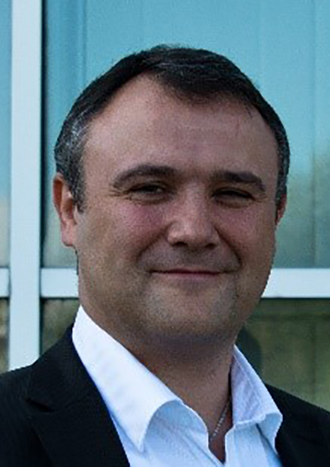

The UPTIME Platform consists of six main components, addressing various phases of the unified predictive maintenance approach. In our previous newsletter released in May 2019, we introduced the UPTIME_DECIDE component for maintenance decision-making and action planning. In this edition, we present the component UPTIME_SENSE for data acquisition and manipulation and the component UPTIME_DETECT & _PREDICT for stream data analytics.
UPTIME_SENSE serves as a modular data acquisition and manipulation component of the UPTIME Platform. The _SENSE component captures data from a high variety of sources and cloud environments. It can connect to both analogue and digital data sources via numerous protocols, acquire data from these heterogeneous data sources, and integrate them towards a configurable data set.
Moreover, it is capable of storing and intelligently handling and filtering the data acquired and can provide it to other subsequent UPTIME components in the form of sensor data streams for further analysis and processing. It also brings configurable diagnosis capabilities on the edge, e.g. for real-time or off-the-grid applications.
Key advantages of UPTIME_SENSE include:
• Sensor & data consumer-agnostic hardware abstraction gateway
• Adaptive, flexible data collection and diagnosis tool chain
• Efficient stream data processing on the edge with cloud functionality
• Supports both fixed and mobile implementation
The UPTIME_SENSE component architecture consists of _SENSEcore and _SENSEnode. The _SENSEcore is one unit per monitored asset and consolidates all data from this asset. It allows for performing edge data analysis and state detection and forwards the information set to the UPTIME_CLOUD.
The _SENSEnode(s) are a set of 1 to n units per asset monitoring the individual sections and parameters of the asset. Each node captures and pre-processes specific sensor data from the asset and forwards this dataset to the _SENSEcore unit.
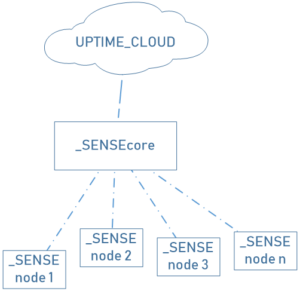
The _SENSEcore and _SENSEnodes used for the FFT Business Case are being developed by BIBA together with FFT. The main focus has been on establishing a hardware basis for the sensor data acquisition from the individual assets. The _SENSEnode acquires data from the motion sensors (i.e. accelerometer, gyroscope, magnetometer), environment sensors (i.e. barometric pressure, humidity, light intensity, air temperature) at fixed sampling rate. It is then processed on the sensor controller of the _SENSEnode to derive measurable physical quantities.
Once data acquisition from the _SENSEnodes is complete, the forwarding of the data to the UPTIME_CLOUD is facilitated by the _SENSEcore. Afterwards, the sensor data along with device identification, sensor type and the measured physical quantity are batch uploaded to the UPTIME_CLOUD. Please feel free to contact us for more details about the deplyoment of the UPTIME_SENSE in your context.

Predictive maintenance in general describes strategies and actions to prevent breakdowns of technical equipment by early intervention in wear‐out or failure situations.
While detection and diagnosis focus on the assessment of technical conditions at the current time, prediction and prognosis try to look into the future to predict the most likely future technical conditions of equipment.
Both play though a crucial role in predictive maintenance.
The _DETECT & _PREDICT component of the UPTIME Platform enables regular time‐based or event‐based observations of data coming from sensors and embedded computing systems that are attached to technical systems.
The _DETECT & _PREDICT component plays a key role for data scientists in charge of developing, testing and deploying algorithmic calculations on data streams. In this way, the component is able to identify the current condition of technical equipment and to give predictions.
Key advantages of UPTIME_DETECT & _PREDICT include:
• Fast engineering of the data-science & prediction algorithms and applications, in particular with reference to maintenance use-cases
• Easy to integrate with other decision-making tools via an open interface
• Fast deployment with scalability to monitor and use predictions models in larger fleets of similar products
In the context of the complete UPTIME Platform, the _SENSE component is required in order to process sensed data streams to the _DETECT & _PREDICT component. An advancement of the state of the art is intended by integrating backflows from other UPTIME components, such as _ANALYZE, _FMECA, and _DECIDE.
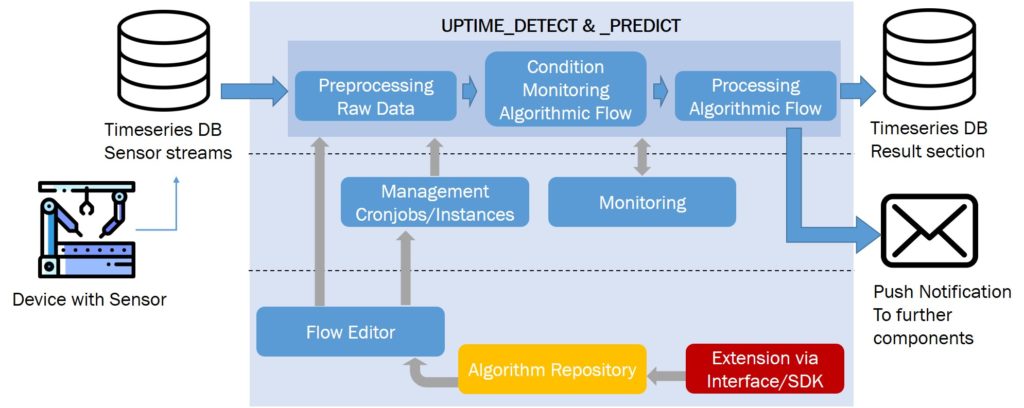
In the FFT Business Case, _DETECT is the component that takes measurement (sensor) data as input and detects anomalies according to defined rules. The rules can be pre-defined or configured by a domain expert, but also automatically generated e.g. by using AI. _DETECT then generates events from detected anomalies, which can be passed on to other modules for further processing.
_PREDICT takes event information generated by _DETECT and estimates a prediction of a certain failure that is expected to happen based on the input event(s) and a user configured set of rules. Please feel free to contact us for more details about the deplyoment of UPTIME_DETECT & _PREDICT in your context.

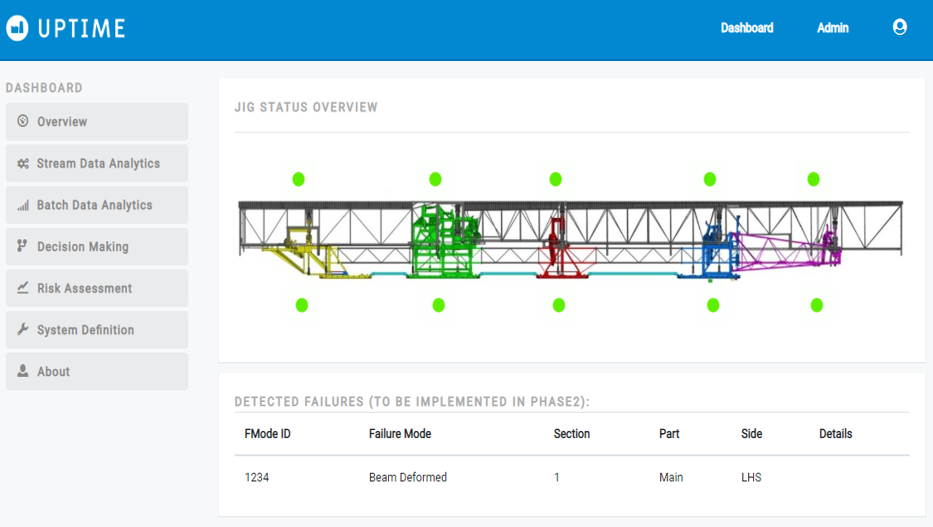
The UPTIME Platform is deployed in and validated against three industrial use cases: (1) production and logistics systems in the aviation sector, (2) white goods production line and (3) cold rolling for steel straps.
In this 4th edition, we have had an opportunity to conduct a second interview with Jeroen Versteeg, Senior Project Manager of FFT Aviation Systems & Test Operations Division based in Bremen. He has kindly shared with us the progress and some lessons learnt from the first implementation phase of the UPTIME Platform in the FFT Business Case.
What have been achieved so far after the first implementation phase of the UPTIME Platform in the FFT Case?
Our approach for the UPTIME project has indeed been quite pragmatic with primary focus on two topics:
– Development of _SENSEnodes, part of a compact and versatile mobile data acquisition and transmission platform based on the IoT paradigm
– Conducting dedicated measurement campaigns to acquire representative data
The main goal of these activities is to verify the functional requirements and performance of the _SENSEnodes and to enable development of the data handling workflow (including automatic filtering, detection, analysis, prediction and visualisation functionalities) within the UPTIME Platform. The results are promising in terms of the quality achieved in the hardware and software within the limited time available.
What have been the main challenges in the development and implementation phase?
Naturally, the technical consortium partners have been focusing on the development of their respective components/functionality for the unified UPTIME Platform, “unified” being the critical keyword here. One challenge therefore was to start integration early enough, or at least keep the necessary focus on the interfaces between the components.
Moreover, to enable (semi-integrated) component tests, another significant challenge was to provide a representative environment to test the data acquisition components; especially field trials with customer equipment were difficult to organise due to different stakeholder priorities. The generation of mock data as input for the rest of the workflow has been a viable alternative, although the development of reliable state-detection functionality on our mobile platform will require more realistic field deployments.
What are FFT’s expectations from the UPTIME Platform ?
FFT plans to achieve meaningful operational capability of the mobile data acquisition platform very soon, which is critical for the further implementation and integration of representative workflows using the UPTIME Platform. Another capability critical to the effectiveness of UPTIME as a flexible and comprehensive solution is the ability to define and represent complex but diverse assets in the data model. In combination with a successful further integration of the functional components and the implementation of a customisable, role-based user interface to fulfil the diverse usage requirements of different types of end-users, this is expected to result in a highly versatile and effective tool to comprehensively manage maintenance workflows of complex assets.
For further information about the FFT business case, including the first interview with FFT on potential benefits of predictive maintenance in large transportation asset operations, please take a look here.
Due to active and structured knowledge management within the project, this was actually handled very well. Lesson learnt: a large multi-disciplinary project should have a party who is explicitly responsible for knowledge management.


How Does the Modular UPTIME Approach Differ from
Other Solutions on the Market?
Every market study agrees that the predictive maintenance market can be expected to grow at a significant, constant rate and will be worth more than a dozen billion dollars in a few years.
Industrials have known about predictive maintenance for a couple of years now, but what exactly is the status of the predictive maintenance market today?
A Roland Berger study predicts that the worldwide predictive maintenance market will expand to around USD 11 billion by 2022.
A MarketsandMarkets study predicts that predictive maintenance market will grow to USD 10.7 billion by 2024.
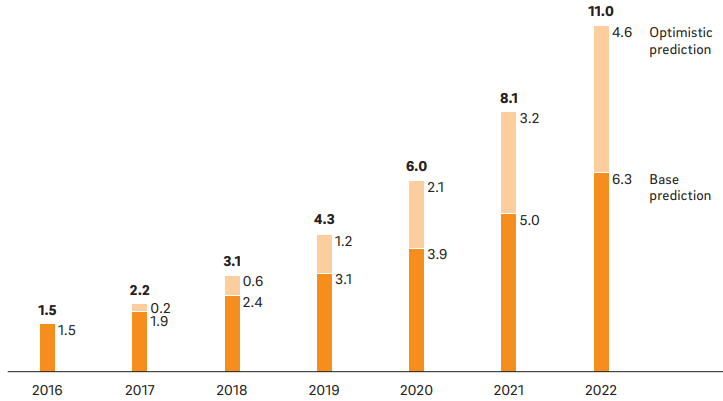
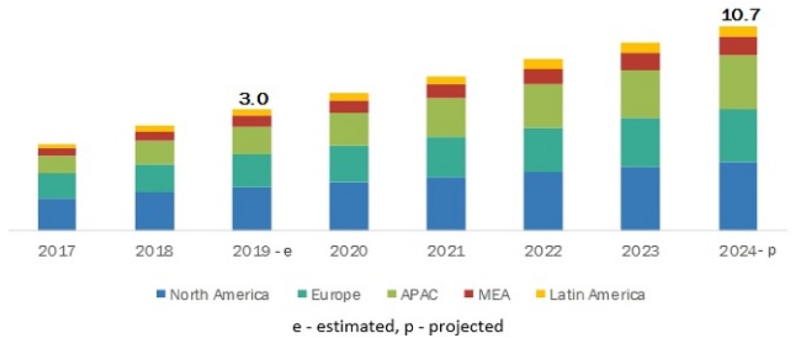
On the supply side of the market, as of today, more than 200 predictive maintenance vendors have emerged. The resulting predictive maintenance landscape is now extremely fragmented and competitive. However, while numerous companies highlight their algorithmic capabilities as key differentiators, we found only limited differentiation in technology in our market study.
Technologically speaking, algorithms and advanced analytics capabilities are not very innovative. True value is brought by integrating operational data with legacy systems such as (1) MES – Manufacturing Execution System, (2) PLM – Product Lifecycle Management and (3) ERP – Enterprise Resource Planning in order to have solutions that finally “close the loop” for business. It enables organizations to take data-driven decisions, to improve asset management and optimize productivity, performance & strategic planning.
Among the reviewed vendors, a few of them (18%) offer an assisted decision-making for operators and even less (5%) are looking to optimize a full suite of operational and scheduling problems. These higher-level intelligence functions are just starting to emerge, and the level of vertical customization required is high.

On the demand side of the market, most interviewed companies acknowledge the benefits of implementing a predictive maintenance strategy. However, they have limited themselves to the deployment of condition-based maintenance, and the application of predictive capabilities in the field with proven results is very rare.
Then, why haven’t we already witnessed a massive adoption?
What are the barriers preventing a more widespread deployment of predictive maintenance?
The main reason cited is that available data is not sufficient to obtain a robust analytic model as historical data collected by industrials is, in most cases, unexploitable and unreliable. Data acquisition from heterogeneous sources is proving to be challenging due to the complexity of existing infrastructures. Moreover, many companies are faced with other pressing issues including the lack of competent resources required to support deployment, expensive upfront costs for an aging existing infrastructures/processes, a perceived immaturity of the technology, etc.
Overall, some predictive maintenance solutions do require a high degree of vertical customization – with specific models developed for each use case. This approach offers a high degree of accuracy, but at higher cost; the lack of horizontal replicability across industries reduces economies of scope and hinders widespread adoption. This partly explains why condition monitoring – which is largely a horizontal and repeatable solution – has been the most widely adopted version of data-driven maintenance.
In this context, UPTIME offers a simple and versatile platform to overcome some of these barriers:
(1) UPTIME modular architecture is open & evolutive and allows industrials to progressively shift from a condition-based maintenance strategy to predictive capabilities, once the required digital maturity is reached.
(2) UPTIME implementation of interoperability standards and universal gateways empowers it with greater adaptation capabilities to various industrial environments with a more complete integration with legacy systems, enabling manufacturing intelligence through digital continuity.
Finally, the technical solution itself is completed with a framework of scoping, deployment methodologies and templates based on an enterprise architecture approach to simplify and robustify the necessary transformation when implementing such a system. The UPTIME Deliverable 8.1 provides more details of the Predictive Maintenance market research conducted by MEWS Partners. The deliverable is available for public download here.

Standards are of the utmost importance for the UPTIME Platform and its impact on the market. In order to reach a greater critical mass and thus to have more impact, we have decided to join our standardization efforts inside the ForeSee Cluster. ForeSee includes six H2020 projects within EU FoF-9 Novel design and predictive maintenance technologies for increased operating life of production systems program; these six projects are: PRECOM, PROGRAMS, PROPHESY, SERENA, Z-BRE4K and UPTIME.
To have a rich synoptic view of the considered standards, each project is establishing a Standards Radar Chart. The Standards Radar Chart is an approach used in aeronautics, for instance by companies like Boeing and Airbus. This approach allows an ecosystem to share a dynamic view of the standardization policy and enables convergence of the stakeholders.
The Standards Radar Chart will be used also in the ForeSee Cluster for analysis and adopting a common action plan regarding standardization for a greater impact of the projects’ outcomes on the market.
Moreover, the first concern for all the projects, is a common terminology and its formalization for an improved used of data from heterogeneous sources in the maintenance processes.
Ontologies are a prospective means to improve interoperability in the factory of the future and its benefit will be explored in the UPTIME where great amount of various data needs powerful information retrieval and automatic reasoning.
If you are interested in these standardization activities and in supporting predictive maintenance and beyond, don’t hesitate to contact us!
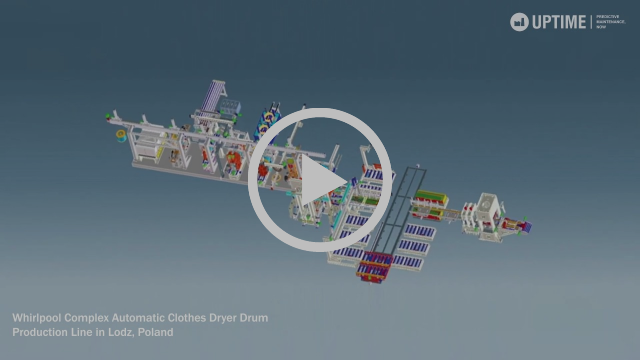
The Strategic Intelligence Platform, developed by UPTIME partner RINA-C, is a database, which presents the state-of-play of predictive maintenance models, techniques and platforms. The aim is to set the basis of the UPTIME project by analysing, on the basis of a structured methodology and selected KPIs, a number of solutions to perform predictive maintenance, ranging from reactive maintenance to proactive maintenance, as well as currently available on both commercial and research level platforms implementing predictive maintenance functionalities. In particular, information regarding the state-of-play in predictive maintenance covering a broad spectrum of
platforms that involve several kinds of predictive maintenance models and techniques is available.
With this database, it is possible to have a wide and smart vision on the predictive maintenance world based on commercial and R&D active players, relevant intellectual properties and scientific publications. The RINA Strategic Intelligence Platform is a web-based result of the UPTIME Deliverable 1.1 and is accessible here.
